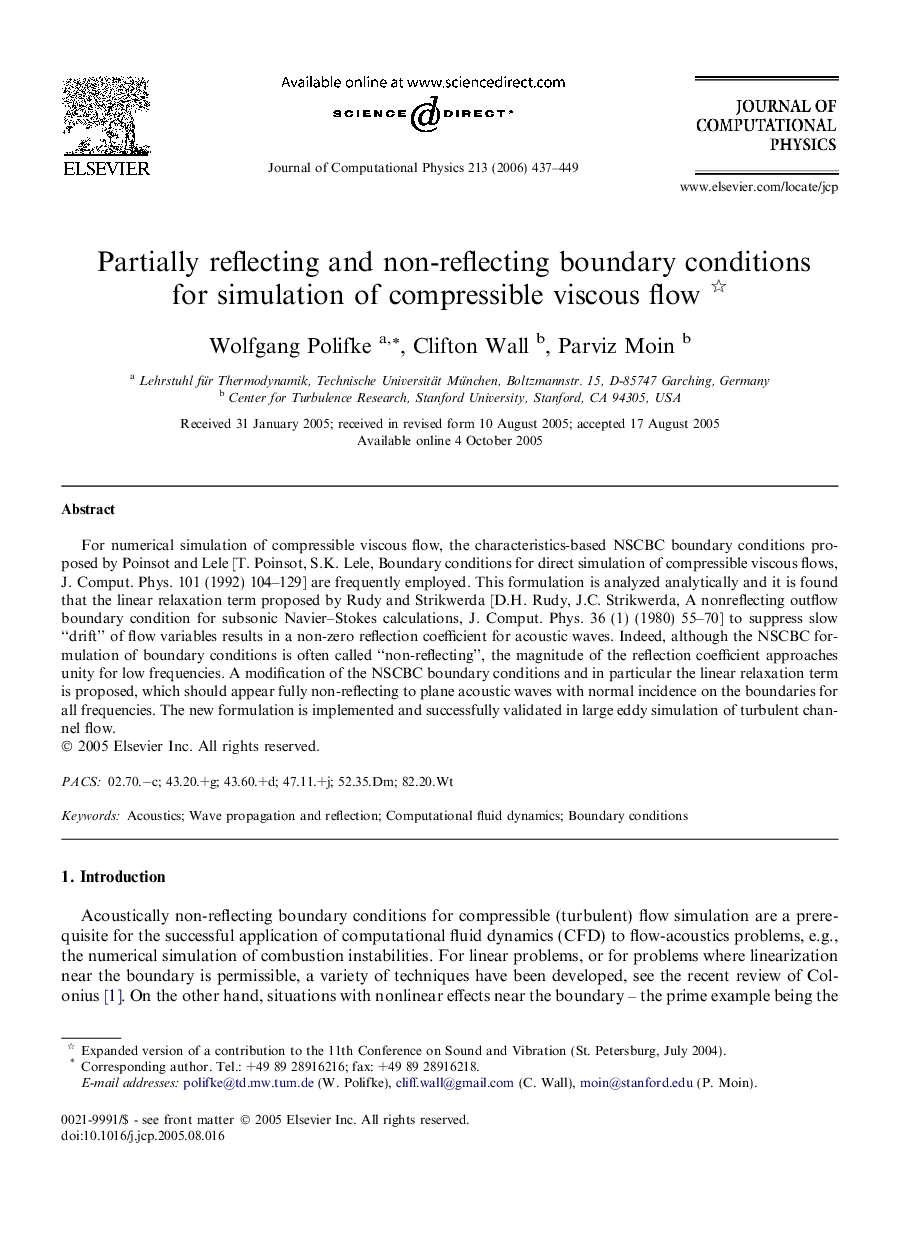| Article ID | Journal | Published Year | Pages | File Type |
|---|---|---|---|---|
| 521267 | Journal of Computational Physics | 2006 | 13 Pages |
For numerical simulation of compressible viscous flow, the characteristics-based NSCBC boundary conditions proposed by Poinsot and Lele [T. Poinsot, S.K. Lele, Boundary conditions for direct simulation of compressible viscous flows, J. Comput. Phys. 101 (1992) 104–129] are frequently employed. This formulation is analyzed analytically and it is found that the linear relaxation term proposed by Rudy and Strikwerda [D.H. Rudy, J.C. Strikwerda, A nonreflecting outflow boundary condition for subsonic Navier–Stokes calculations, J. Comput. Phys. 36 (1) (1980) 55–70] to suppress slow “drift” of flow variables results in a non-zero reflection coefficient for acoustic waves. Indeed, although the NSCBC formulation of boundary conditions is often called “non-reflecting”, the magnitude of the reflection coefficient approaches unity for low frequencies. A modification of the NSCBC boundary conditions and in particular the linear relaxation term is proposed, which should appear fully non-reflecting to plane acoustic waves with normal incidence on the boundaries for all frequencies. The new formulation is implemented and successfully validated in large eddy simulation of turbulent channel flow.
